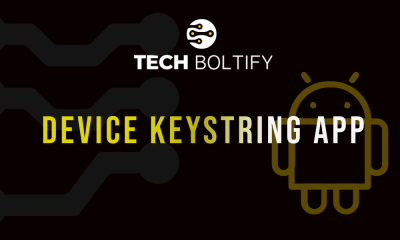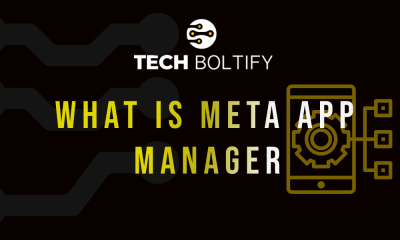Tech
What Will the Price of AI Be in 2025?
AI solutions are a powerful tool for businesses, helping them to scale, improve user experiences, and stay competitive in the market. The digital toolkit of 2025 includes AI as its fundamental component, which combines both automation improvements and decision-making transformation capabilities. As more organizations adopt AI solutions, questions concerning their pricing structure emerge. What are the expenses required for AI implementation during 2025?
Understanding AI Cost Components
The implementation of AI requires complex tasks despite its newly accessible appearance. AI system development includes expenses for hardware as well as software and data acquisition along with development time and final deployment pricing. The entire investment depends on multiple dependencies which exist within each element of this process.
Hardware Costs
Artificial intelligence is dependent on supercomputers. All three of the major cloud providers, Amazon Web Services (AWS), Google Cloud Platform (GCP), and Microsoft Azure, offer AI-specific infrastructure, graphics processing units (GPUs), and computing power on demand. Hardware costs depend on usage time, computing power, and configuration. GPUs available for hosting from 2025 will have pricing between $0.50 to $10 per hour while TPU will charge between $2 to $40 per hour.
Thanks to improved chip manufacturing, hardware prices have dropped slightly. Small businesses have gained access to scalable computing abilities despite not needing their own servers for implementation. Although processing power expenses stay foremost in AI model scaling and demanding computations yet businesses need to plan them diligently due to their significant cost factor.
Software Costs
Less expensive AI software systems exist because of PyTorch and TensorFlow which are open-source frameworks. Open-source machine learning frameworks have provided expanded access to modern ML technology for all users. Still, some businesses opt for commercial platforms that offer advanced tools and support. Prices vary from $1,000 to $100,000 per month, based on demands, deployment pipeline complexity, and scalability.
Bundling AI development platforms with cloud resources and integrations simplifies enterprise solutions but impacts budget planning. Choosing the right software stack is a major cost consideration for AI initiatives.
Data Costs
AI models need quality data. Dataset acquisition, labeling, and cleaning are costly. Small projects may need $10,000 to $50,000 for data in 2025, while huge ones may need $1 million. Data diversity and volume affect AI model development; therefore, choosing the correct data sources and management methodologies is crucial.
Real-time data, multilingual databases, and industry-specific information may increase costs. Many companies outsource data services or engage internal teams to filter and preserve training data.
Development and Implementation Costs
AI development isn’t cheap. Costs depend on project complexity, required accuracy, and sector-specific challenges. IDC reports that healthcare, finance, retail, and logistics demand drove worldwide AI expenditure to $110 billion in 2024 and rising.
Development costs include:
- Data preparation.
- UI/UX design.
- Algorithm creation.
- Cloud or on-premises deployment.
- Regulatory compliance.
- Ongoing scaling and support.
This may cost businesses $100,000 to millions. For integration, training, infrastructure, and maintenance, implementation costs 50%–200% more. For many companies, a trusted development partner is essential to reducing expenses.
Solution-Based Cost Ranges
- NLP: $50K–$500K dev + $10K–$100K integration
- Computer Vision: $100K–$1M dev + $20K–$200K integration
- Predictive Analytics: $75K–$750K dev + $25K–$250K integration
- RPA: $20K–$200K dev + $10K–$100K integration.
Cloud vs. On-Premises
Many firms favor cloud-based AI for its flexibility and scalability. Cloud services are pay-as-you-go, updated automatically, and accessible anywhere. On-premises systems demand more upfront expenditure but greater control.
Businesses seeking cloud solutions typically seek professional help.Th at’s where cloud cost optimization services become essential, helping companies reduce waste and manage growing AI workloads. These services not only help lower monthly bills but also improve performance by eliminating resource overuse and ensuring that workloads are properly allocated.
Training, Testing, and Monitoring Costs
Aside from development and implementation, businesses should also account for the costs of training and testing AI models. High-quality training cycles require enormous amounts of computing power and time. Moreover, ongoing performance monitoring, retraining, and updating of models are necessary to maintain relevance and accuracy.
Model drift, changes in input data, or new business goals can all require additional investment. Budgeting for long-term lifecycle management is therefore essential.
What Drives AI Costs in 2025
- Data Quality: Better models need better data. That means more costs for acquisition and validation.
- Compute Resources: Prices for chips may drop, but energy, cooling, and hardware management still cost money.
- Sustainability: Companies are investing in green data centers to offset AI’s energy use.
- Model Complexity: Larger and multimodal models mean higher development and maintenance budgets.
A reliable machine learning development company helps companies remain competitive. End-to-end AI services from these organizations save internal work and improve project results. Outsourcing to such expertise may reduce time to market, increase accuracy, and maintain regulatory compliance.
- Talent Shortage: AI engineers and data scientists are in demand, raising pay.
- Regulations: Compliance with AI laws adds legal and procedural expenses.
- Security Needs: Defending models against attacks is now a necessary line item.
- Cloud Scaling: Expanding AI capabilities requires increased cloud usage, which means rising costs.
AI Security and Compliance
Security is another major cost consideration. Securing AI systems is crucial because they handle sensitive data and power important activities. Data encryption, model training pipeline security, identity management, and auditing tools are AI cybersecurity. These layers make AI installations strong and reliable.
The EU AI Act and industry-specific rules mandate explainability, fairness, and openness. Meeting these requirements may increase costs but also builds user and customer trust.
Final Thoughts
AI can improve operations, but it costs. Companies can manage AI expenditures properly and enjoy long-term rewards with the correct plan, open-source technologies, and professional development aid.
AI research costs plus long-term infrastructure, personnel, and compliance investments must be included to calculate its 2025 cost. Companies eager to innovate may reap big benefits from this investment.
Tech
Avoiding Production Setbacks: The Critical Role of Network Infrastructure in Today’s Smart Factories
In the era of intelligent manufacturing, where automation and data analytics guide daily operations, a factory’s digital infrastructure is just as important as its physical equipment. Behind the movement of conveyor systems and the precision of automated tools lies a sophisticated network that synchronizes processes, transmits sensor data, and supports real-time decision-making.
As industrial facilities continue to adopt more advanced technologies, many are discovering that their network capabilities have not kept pace. The result often includes disruptions, inefficiencies, and unplanned downtime—issues that frequently stem from inadequate connectivity rather than equipment failure.
The Hidden Weak Point: Network Fragility
Unlike mechanical breakdowns that are easy to spot, networking issues can remain hidden until they begin to affect productivity. In connected production environments, a dropped signal or delayed data transmission may stop machinery or generate system faults. Delays in sensor feedback can distort production logic, while inventory systems that are not in sync may lead to stock miscounts and unnecessary waste.
Even routine software tasks, such as installing patches or syncing with the cloud, are vulnerable to poor network performance. When the underlying infrastructure lacks stability, these small problems can build up over time, increasing the strain on daily operations and gradually reducing overall efficiency.
The High Cost of Downtime
Downtime in manufacturing is not just an inconvenience—it is a costly disruption. Every moment that production is paused results in lost output, interrupted processes, and rising expenses. Industry estimates put the average cost of unplanned downtime at approximately $125,000 per hour.
What makes this even more concerning is that 31 percent of these outages are caused by network infrastructure failures. An additional 44 percent are related to power issues, which are often made worse by the absence of reliable backup systems or network redundancy.
Building a Resilient Network Foundation
To stay ahead, manufacturers must treat network stability as a critical part of their operational strategy. Some effective steps include:
- Upgrading to Wi-Fi 6 or 7: These advanced protocols improve speed, expand device capacity, and deliver stronger performance in high-density areas. Features like MU-MIMO and OFDMA enhance the efficiency of wireless communication throughout the factory.
- Implementing Mesh Networking: Unlike traditional setups, mesh networks offer interconnected, seamless coverage. This helps eliminate coverage gaps in large industrial facilities and ensures consistent connectivity.
- Deploying Edge Computing: Processing data closer to where it is generated, often using rugged computing devices, helps reduce latency and limits reliance on cloud systems. This allows faster response times for time-sensitive processes.
- Creating Redundant Pathways: By establishing alternate routes for data flow, manufacturers can maintain communication even if part of the network fails. This reduces the likelihood of a single point of failure bringing operations to a stop.
Future-Ready Factories Depend on Network Strength
As manufacturing becomes more digitized and automated, success will increasingly depend on the speed and reliability of information flow—not just on the amount of data generated or the sophistication of the equipment used. A strong network infrastructure serves as the digital nervous system of a modern factory, enabling operations that are faster, smarter, and more adaptable.
By investing in connectivity improvements today, manufacturers not only minimize the threat of costly downtime, but also position themselves to thrive in a rapidly evolving, data-driven marketplace. In this new landscape, dependable networks are not simply beneficial—they are essential to business success.
Tech
Unveiling the History and Prestige of Horse Riding Competitions
Have you ever wondered how horse riding contests became so popular?
These events show skill, teamwork, and a strong connection between the rider and the horse. They started long ago and have changed over time. From old races to today’s jumping contests, horse riding competitions are full of excitement and tradition.
Find out why people love these events and what makes them special to watch and take part in. Ready to learn more about the world of horse riding and feel the thrill? Jump in and discover the fun!
Ancient Origins
Horse riding competitions started a very long time ago. People in ancient times, like the Greeks and Romans, held races with horses and chariots to see who was the fastest and strongest. These races were important for celebrations and training for battles.
Different places made their own kinds of horse contests, which later helped create the horse sports seen today. Knowing about these early competitions helps people understand why horse riding is such a special sport. If you want to learn more about the Defender Kentucky Three-Day Event, it shows how the past still shapes horse riding events now.
Rich Traditions
Horse riding competitions come from many different customs and styles. Over time, riders and horses have followed rules passed down from long ago. Events like dressage, jumping, and eventing show how well riders and horses work together.
These traditions keep the sport fun and respected by many people. Some competitions have special clothes and ceremonies that show the history behind the events.
Learning about these rich traditions helps you understand that horse riding is more than just a sport. Taking time to learn something new about these customs can help you enjoy and appreciate horse riding even more.
Global Prestige
Horse riding competitions are popular in many countries around the world. Top riders and horses come from far away to take part in big events. These contests show skill, speed, and how well riders work with their horses.
Many people watch and enjoy these events on TV or in person. Winning a big horse riding contest is a big honor for riders. Different countries hold famous competitions that bring riders together from many places.
This shows how much people love and support horse riding today. Knowing about this helps explain why horse riding contests are still important and fun for many fans and riders.
Cultural Impact
Horse riding competitions are important in many cultures around the world. They bring people together during festivals and special days. These events show how much people care about horses and riding.
In some places, horse riding is part of local customs, music, and clothes, making the contests colorful and special. For many, these competitions help keep their history and way of life alive.
They also teach young riders to be responsible, work hard, and work with their horses. Horse riding contests do more than just test skill-they help shape who people are and create happy memories that last a long time. This makes the sport special for everyone involved.
The Lasting Legacy of Horse Riding Competitions
Horse riding competitions have a rich past that shapes their importance today. From ancient beginnings to global events, they show skill, teamwork, and deep respect for horses.
These contests connect people through culture and tradition, making the sport more than just a competition. Understanding this lasting legacy helps you appreciate why horse riding remains a beloved and respected activity around the world.
Did you find this article helpful? You can check out our website for more awesome content like this.
Tech
The Role of AI in Modern PDF Converter Technology
Artificial intelligence has been making an enormous impact in the technology industry for the past few years, transforming how businesses and individuals work from Silicon Valley to New York City. This evolution has opened up new possibilities in many technological areas, such as PDF converter tools. Until relatively recently, we have experienced big changes in the tools that help us manage documents effectively.
In this post, we will look at how these AI developments have improved PDF converter technology to provide more opportunities for users around the world. Whether you need a simple conversion or require an online PDF to Word converter for complex document editing, AI-powered tools are revolutionizing the experience.
Enhancing Accuracy and Efficiency
PDF converters are being powered more accurately by AI. Previous versions frequently struggled to detect complex layouts or non-standard fonts, resulting in errors. AI algorithms are better than ever at interpreting these characteristics, meaning fewer errors. This is a powerful development that ensures that the formatting of the original documents is retained so that you can always count on the same formatting experience during conversion.
AI improves productivity by automating routine tasks. The document converter also offers an option to convert a large batch of documents without human intervention, saving time and resources. Such automation helps businesses that deal with large amounts of documentation, as it drastically streamlines business workflows.
Improving Text Recognition
Optical Character Recognition (OCR) is an essential function of a PDF converter. OCR has advanced with AI for more accurate reading and extraction of text from images. Today, converters can support multiple languages and even more challenging scripts.
With excellent precision, AI-driven OCR can detect text in various settings, be it handwritten notes or scanned papers. This allows users to read and edit text directly from all sorts of sources for added productivity and convenience.
Enhancing Security Features
In digital document management, security is a big concern. Integrating artificial intelligence with PDF converters has improved the security of such conversions by detecting possible threats and vulnerabilities. It uses intelligent algorithms to identify and detect malicious content so that every document that is converted is safe for use.
In addition, AI improves encryption technologies that protect sensitive information during conversion. That way, users can make document conversions with peace of mind and have their material protected from unauthorized access.
Facilitating Document Organization
Another advantage of AI is that it organizes all the converted documents in an orderly manner. It can automatically classify files by content, making them easier to retrieve. Sorting through all those documents manually was never practical, but AI is able to do this quickly. According to the National Archives and Records Administration, proper document organization is essential for both compliance and efficiency in any organization.
Part of this organization capability is tagging, which allows users to label documents with relevant keywords. It makes searching for specific files easier and reduces the amount of time it takes to browse through folders. With AI organizing and cataloging documents, it frees up time to do other activities that matter.
Advancing User Experience
The user experience is greatly improved with AI-integrated PDF converters. AI has made these tools more intuitive with interfaces that are usable for both those who are tech-savvy and others who are not. Such interfaces can be built in a general form, and AI can make them personalized based on how the user works and what they prefer.
You can also make the best of predictive features, where AI can analyze the needs of users and predict accordingly. It could recommend the most common conversion settings, for example, making the process even smoother. Similar features help PDF converters reach a wider audience.
Supporting Accessibility
AI-powered PDF converters help in making documents accessible to more people. For instance, they can translate documents into screen-reader-compatible formats, which helps those who are blind or visually impaired. This functionality ensures everyone has access to critical information in easy-to-obtain ways.
On top of that, AI also provides document translation in multiple languages, enabling it to break past language barriers. This allows an entire global community to engage with content in the language of their choice. This highlights the importance of AI in improving accessibility and the potential of AI to contribute to building a more equitable digital space.
Conclusion
AI keeps advancing PDF converter technology with many benefits. AI is essential in taking these tools to the next level, from increased accuracy and efficiency to better security and accessibility.
With the advancement in technology, users should expect better solutions in the future that make document management smoother and more efficient. By adopting AI features in PDF converters, processes get streamlined, and it can equally help in creating a more inclusive digital environment.
-
Tech12 months ago
AI and Freight Management
-

 Tech1 year ago
Tech1 year agoLPPe Service Android App and its Functions – How to Remove it
-

 Tech1 year ago
Tech1 year agoWhat is a Permission Controller – Control Manager Notifications
-

 Tech1 year ago
Tech1 year agoWhat is Device Keystring App On Android
-

 Tech1 year ago
Tech1 year agoWhat is Carrier Hub – How to Resolve Processing Requests Issues
-

 Tech1 year ago
Tech1 year agoWhat is Summit IMS Service – How to Stop Syncing on Your Android Device
-

 Tech1 year ago
Tech1 year agoMeta App Manager – What is Meta App Installer
-

 Tech1 year ago
Tech1 year agoWhat is Cameralyzer Samsung – How to Fix or Uninstall Cameralyzer on Android

